
Edward Winter
(2017)

White mates in nine moves
1 Rb7 Qxb7 2 Bxg6+ Kxg6 3 Qg8+ Kxf5 4 Qg4+ Ke5 5 Qh5+ Rf5 6 f4+ Bxf4 7 Qxe2+ Bxe2 8 Re4+ dxe4 9 d4 mate.
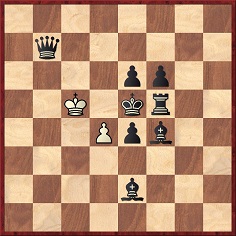
The origins of this ‘Immortal Problem’, composed by Konrad Bayer (1828-97) in the 1850s, are the subject of contradictory information in chess reference books. For example:
D.J. Morgan discussed the problem in the BCM (July 1960, page 200 and February 1962, page 53); both items referred to The Era of 6 July 1856, and the second one added ‘Leipziger Illustrirte, 16 August 1851’.
Below, firstly, is the problem’s appearance in The Era, 6 July 1856, page 5 (with, it will be noted, a black pawn on b2):
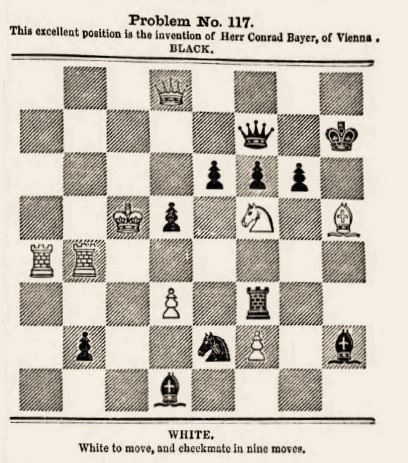
The solution was given on page 13 of the 10 August 1856 edition of The Era. It is unclear why the Dictionnaire des échecs stated that the composition won the Era competition. That contest, won by Bayer, concerned a set of two three-movers, two four-movers and two five-movers (The Era, 6 January 1856, page 13). Bayer and the other winners were announced on page 13 of the newspaper’s 18 January 1857 edition. See too pages 61-63 of the February 1857 Deutsche Schachzeitung. The Cleveland Public Library has confirmed to us that the nine-mover is not included in Löwenthal’s book on the problem tournament (London, 1857).
Notwithstanding the ‘Conrad’ in The Era (also adopted by Jeremy Gaige in Chess Personalia), Konrad Bayer is the established spelling, and C.N. 8269 has a reference to Konrad Bayer’s anagrammatic pseudonym, Drakon Rabey. Konrad Bayer was also the spelling in an article about him on pages 289-291 of the October 1865 Deutsche Schachzeitung which was accompanied by this illustration and signature:
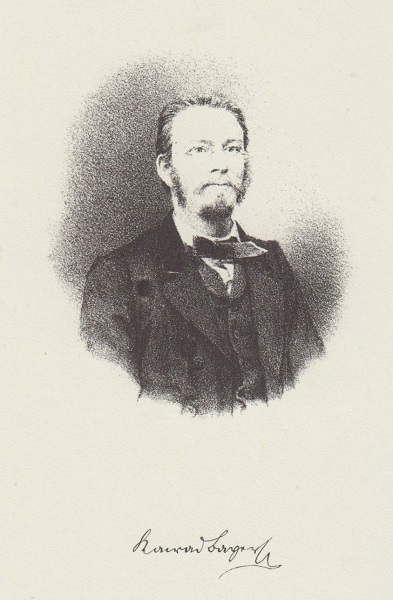
A clearer version of the picture was published on page 258 of CHESS, 14 March 1938:
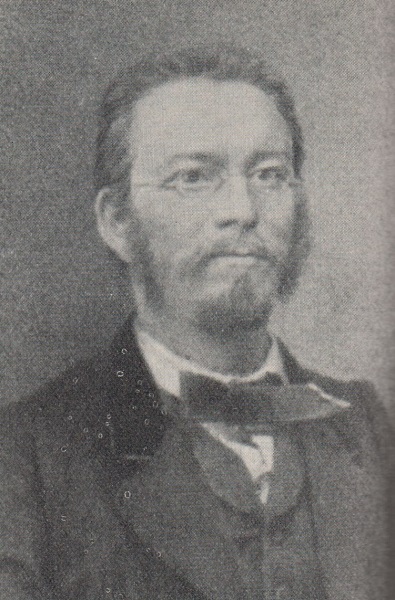
In the above-mentioned BCM item in July 1960 D.J. Morgan commented:
‘The “Immortal Game” was given its title when the claims to immortality were, relatively, few and tenuous. The accompanying position was christened the Immortal Problem and, for several decades, ranked as one of the greatest extant compositions. But its checking pursuit has long ceased to excite, and the problem is largely forgotten.’
The phrase ‘now largely forgotten’ was used a decade later in The Encyclopaedia of Chess. For its part, The Oxford Companion to Chess (second edition) asserted:
‘Considered to be the “last word” in this genre, the problem was immediately dubbed “the Immortal Problem”, and almost as immediately forgotten, for the problem art was fast changing to its modern form.’
The problem was indeed in the old style, but the term ‘forgotten’ cannot be justified.
In presenting the further documentation below we are indebted to one of the chess world’s finest researchers, Peter Anderberg (Harmstorf, Germany), for a number of the German-language items and, especially, for providing the original (1851) publication of the problem:
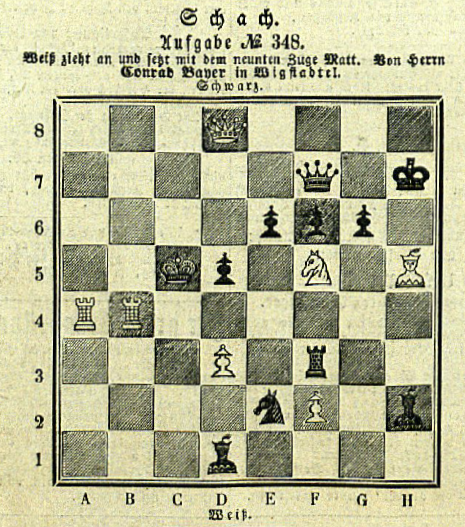
lllustrirte Zeitung 16 August 1851, page 160
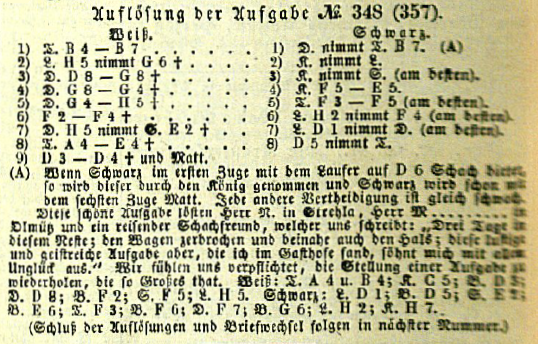
It will be noted that Bayer was identified as the composer.
His problem was the subject of a detailed historical article, ‘Die unsterbliche Aufgabe in neun Zügen’, on pages 298-300 of Heft 7 (1900) of F. Amelung’s Baltische Schachblätter, an article reproduced on pages 66-68 of the March 1900 Wiener Schachzeitung. See too ‘Die sogenannte unsterbliche Aufgabe’ on pages 211-214 of the May-July 1907 Wiener Schachzeitung. As mentioned in C.N. 7728, the Wiener Schachzeitung is available online at the ANNO website.
By way of example, below are further appearances of Bayer’s problem:
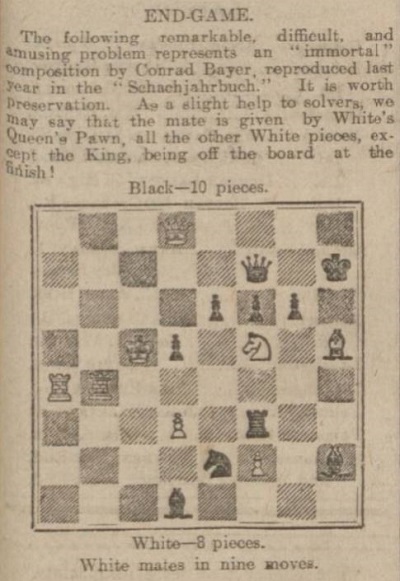
Falkirk Herald, 24 November 1909, page 7
The article in the Anhang zum Schachjahrbuch 1907 by L. Bachmann (Ansbach, 1908) which was mentioned by the Falkirk Herald:
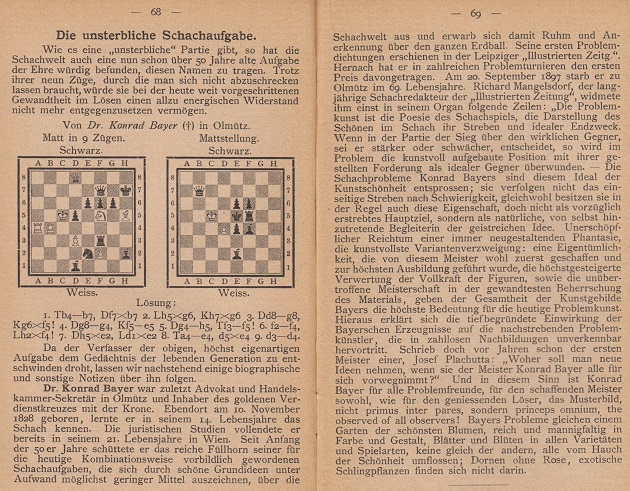
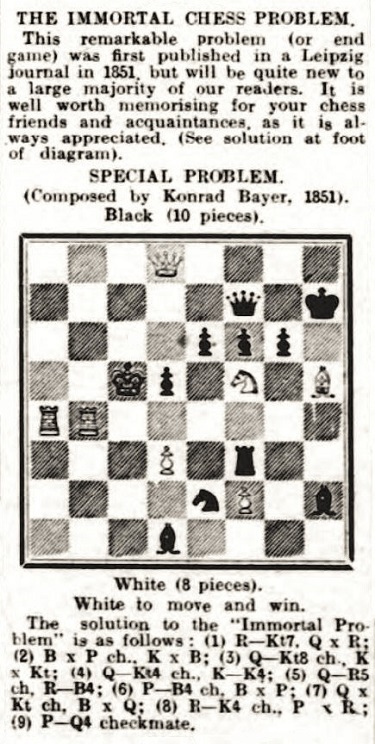
Staffordshire Advertiser, 26 December 1925, page 5
Claims that Bayer’s problem was/has been forgotten are further undermined by its appearance in popular books, e.g. Chernev’s The Bright Side of Chess (page 80) and Reinfeld’s The Joys of Chess (pages 113-114), as well as on page 110 of Tal’s Winning Chess Combinations by Tal and Khenkin – quite apart from all the reference books cited at the start of the present item.
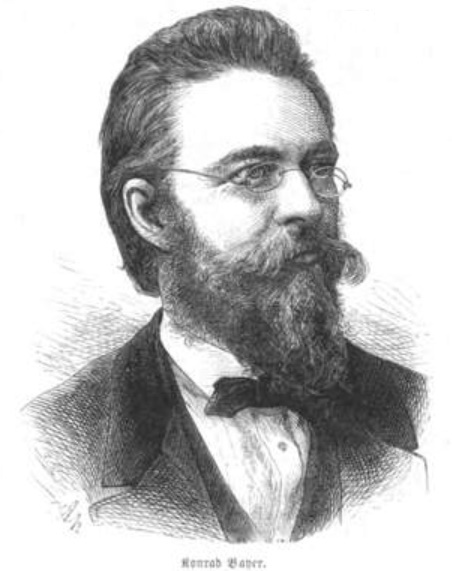
Illustrirte Zeitung, 6 July 1872, page 18.
(10397)
C.N. 10397 quoted a comment by D.J. Morgan about Konrad Bayer’s problem on page 200 of the July 1960 BCM, and Michael McDowell (Westcliff-on-sea, England) points out that very similar words had appeared on pages 113-114 of The Chess Problem by H. Weenink (Stroud, 1926):

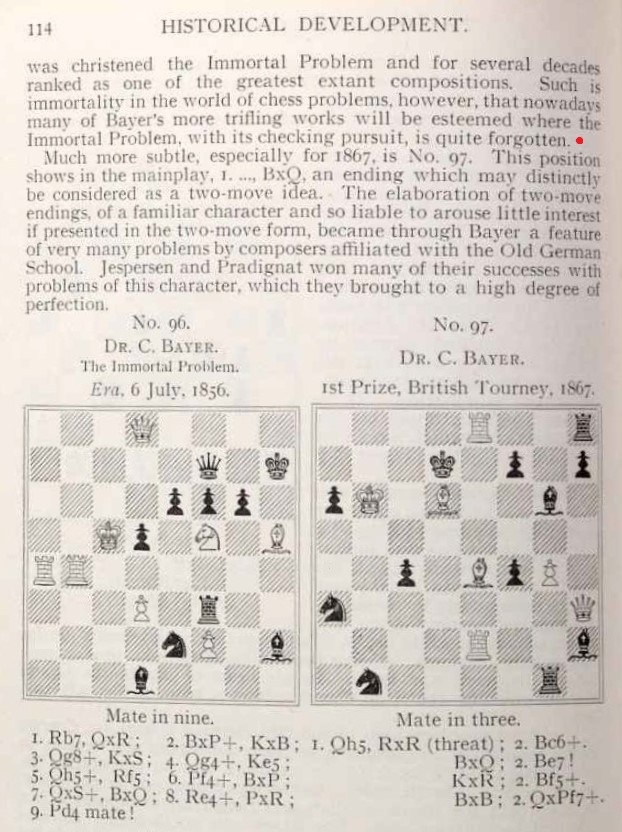
(10402)
Reviewing Chernev’s The Bright Side of Chess on pages 357-358 of the December 1952 BCM, D.J. Morgan concluded:
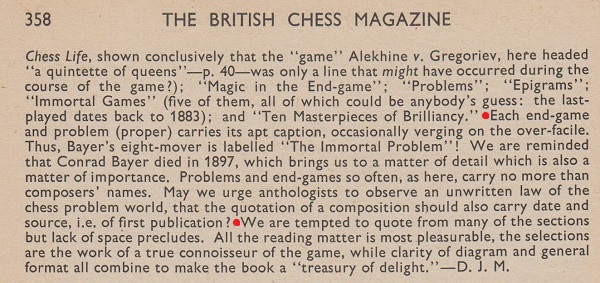
Below is what had appeared on page 80 of Chernev’s book:
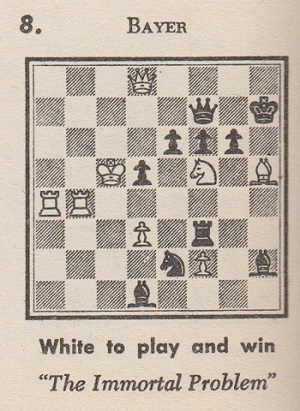
(10403)
The positions discussed in C.N.s 10397 and 10402 (K. Bayer) and C.N. 6646 (E. Mason) both appeared on page 43 of Chess Review, February 1953, in a column by Bruce Hayden:

(10429)
Page 74 of the Chess Player’s Scrap Book, May 1907 (edited
by Emanuel Lasker):
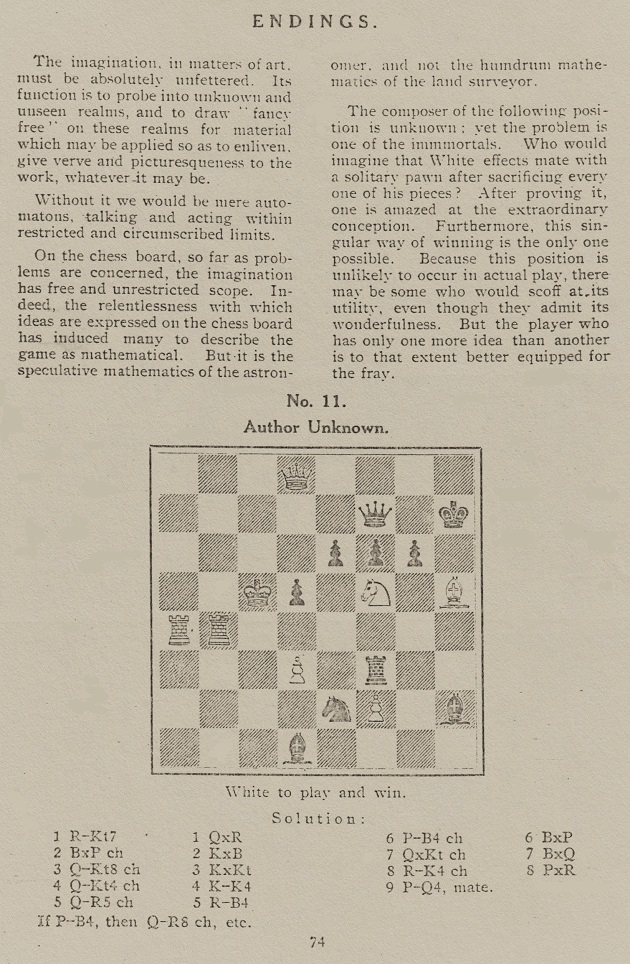
(10505)
In his article ‘The Romantic Art in Chess’ on pages 15-16 of the January 1969 Chess Life, Pal Benko discussed The Immortal Game and the Immortal Chess Problem. Regarding the composition by K. Bayer (‘C. Meyer’) he wrote:
‘This problem excited its composer’s contemporaries no doubt because of the sheer quantity of material sacrificed in order to give mate with the last pawn. In a way it resembles the classical tragedy: almost all the “actors” die before the play is over. It is certainly an extraordinary idea, but, for today’s taste, “how” is of greater significance than “how much”.’
(11423)
To the Chess Notes main page.
To the Archives for other feature articles.
Copyright: Edward Winter. All rights reserved.